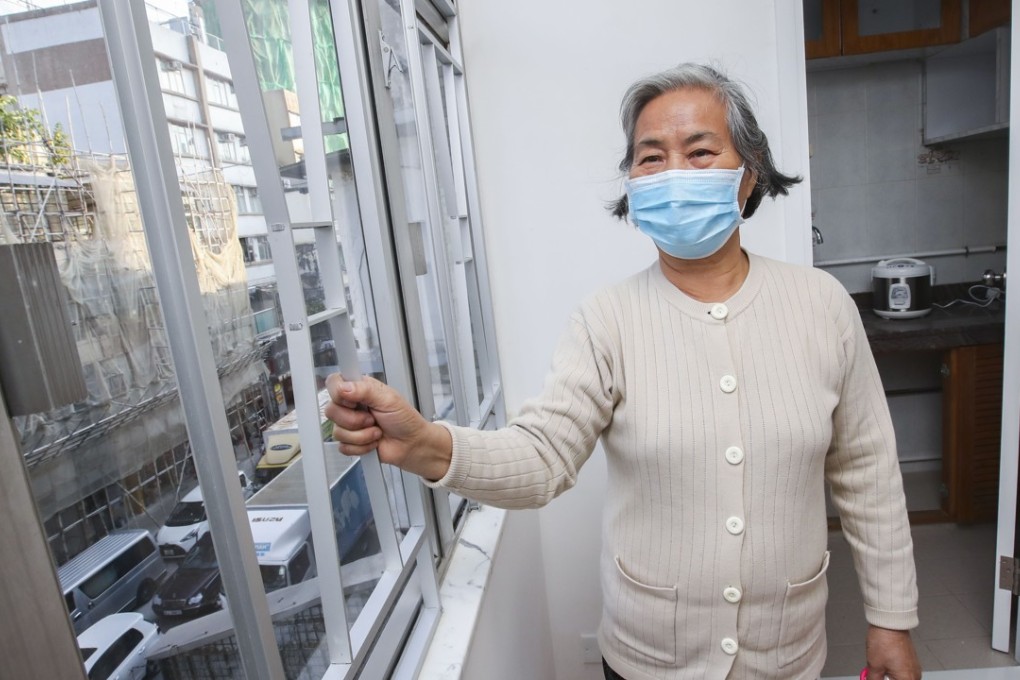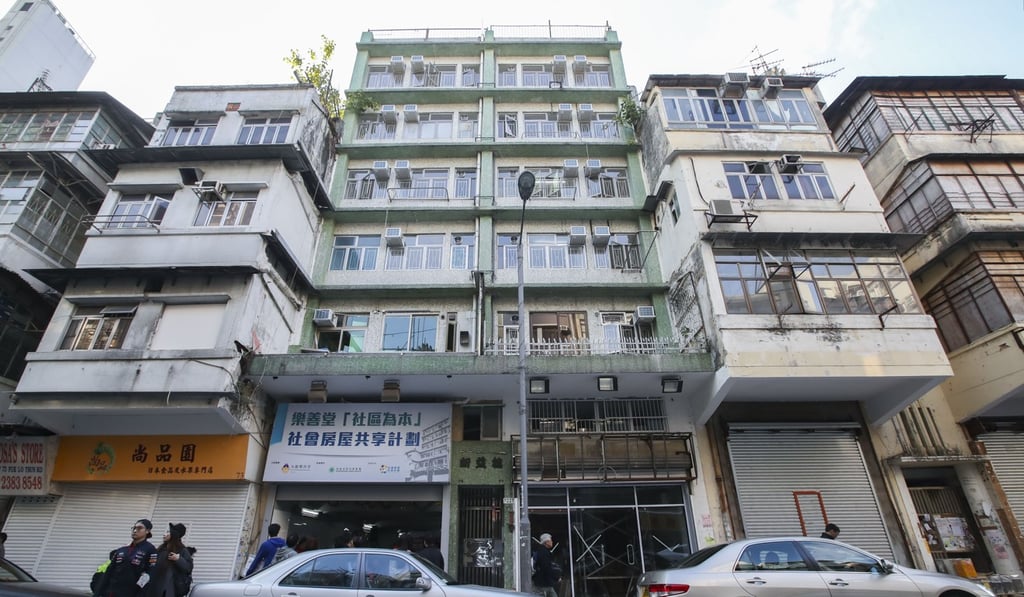Grandmother and disabled husband used to live in rooftop shack in Hong Kong – but housing scheme has given them new start
Typhoon days were the worst, 66-year-old says of roof that was pieced together with corrugated metal sheets

Christmas has come early for 66-year-old Grandma Tang and her wheelchair-bound husband, who will move into a newly renovated 260 sq ft flat next week.
The pair, along with their six-year-old grandson, used to live in a 100 sq ft rooftop shack on top of a nine-storey walk-up in To Kwa Wan, Kowloon.
Tang’s roof, pieced together with corrugated metal sheets, would rattle whenever it rained or got windy.
“Typhoon days are the worst. We get so scared of the wind and rain we can’t even fall asleep, we just hide inside our flat,” said Tang, who preferred to only be identified by her surname.
Tang is one of 20 families who are the first batch to benefit from a government-backed shared housing scheme, called the Community Housing Movement, launched in September.
